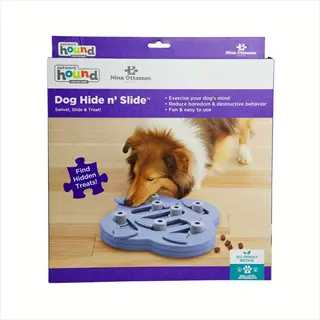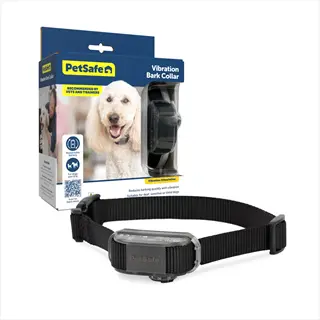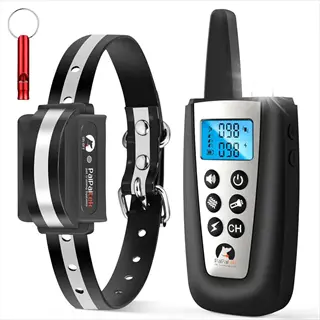Effective Dog Barking Solutions for Peace

Written by
Robert Brown
Reviewed by
Prof. Henry Webster, Ph.D.Recognizing triggers is vital; safe and effective dog barking solutions necessitate comprehending the root causes.
Environmental changes (like visual barriers) will eliminate triggers for territorial barking immediately.
Positive reinforcement training works best when reward is given within a 1.5 seconds.
Should barking continue after two weeks, it is appropriate to seek professional help.
Separation anxiety protocols need slow, gradual desensitization and can take four to eight weeks.
Busting myths helps to avoid approaches that could be harmful, like the myth "let them bark it out."
Article Navigation
For dog barking solutions, it's important to discern between normal notifications and dysfunctional behavior. If your dog barks for a moment or two after the doorbell rings, that's natural communication. Excessive barking is the constant sound without an apparent cause. I've known dogs to bark for hours due to loneliness.
Methods of discipline, such as yelling or using shock collars, can often exacerbate barking. They do create fear and confusion, however. We need to understand the cause or causes of the problem. Your dog may be bored, anxious, worried, or protecting his territory. A knowledge of this is the first step toward a peaceful solution.
Effective techniques include simple home modifications, coaching strategies, and stress management techniques. Start with easy modifications such as obscuring street views. Move on to more advanced commands such as quiet. Finally tackle deeper fears with professionals. Your dog's every bark is an attempt to communicate with you.
Environmental Management
Basic visual barriers can be effective measures against territorial barking. Put frost on the windows at dog height. This obstructs dogs from seeing passing triggers, such as squirrels or delivery people. I have seen the window barking go down by half in a week for many of my clients.
White noise machines are extremely beneficial for dogs that are sensitive to sound. Place them at doors, etc., at moderate to low volumes. They mask the triggering sounds, such as the doorbell or construction noises. I taught my rescue dog not to mind fireworks at all after we started a consistent background noise.
Rotate puzzle toys on a strict three-day schedule to maintain interest. On Monday, use a Kong filled with frozen yogurt. Wednesday offers a snuffle mat concealing kibble. Friday introduces a new interactive ball. This prevents boredom barking from repetitive toy usage.
Identify and train solutions tailored to your dog's triggers. If the mailman is an issue, put a barrier in the front window. If thunderstorms trigger anxiety, create a sound-absorption space for safety. Each solution addresses specific changes in the dog's environmental input that trigger the vocal response.

Visual Barrier Solutions
- Curtains and blinds: Install blackout curtains to completely block outdoor movement that triggers territorial barking, especially during high-traffic hours like school dismissal times.
- Frosted window film: Apply removable static-cling film to lower window sections to obscure street views while maintaining natural light flow indoors.
- Opaque fencing: Replace chain-link fences with solid wood or vinyl panels exceeding six feet height to prevent yard barking at passing pedestrians.
- Furniture rearrangement: Position sofas and dog beds away from windows to reduce opportunities for surveillance barking at mail carriers.
- Visual distractors: Place bird feeders or moving wind spinners in safe distant areas to redirect attention from high-traffic zones.
- Access limitation: Close doors to rooms with street-view windows during peak barking hours using baby gates

Sound Management Tools
- White noise devices: Position near windows facing busy streets to mask triggering sounds like car doors slamming or pedestrian conversations.
- Calming music: Play classical or reggae music at 50 dB to provide consistent auditory background during alone time periods.
- Soundproofing panels: Install acoustic foam panels on walls facing noisy areas to dampen external disturbances.
- Television programming: Leave nature documentaries playing to provide engaging auditory stimulation when home alone.
- Distance desensitization: Gradually increase volume of recorded trigger sounds starting at imperceptible levels over weeks.
- Positive association: Pair triggering sounds with high-value treats like chicken to create new neural pathways

Boredom Prevention Systems
- Puzzle rotation: Cycle three different food-dispensing toys weekly to maintain novelty and cognitive engagement levels.
- Frozen enrichment: Prepare Kongs with layered mixtures like kibble, peanut butter and banana then freeze for extended challenge.
- Scent exploration: Hide treats in cardboard boxes or snuffle mats for daily nose work sessions lasting 10-15 minutes.
- Novelty introduction: Introduce one new toy weekly from categories like plush, rubber or rope to sustain interest.
- Feeder variety: Alternate between slow feeders, lick mats and scatter feeding to engage different problem-solving skills.
- Scheduled enrichment: Provide interactive toys specifically during high-barking periods like morning commutes

Odor Control Methods
- Enzyme cleaners: Apply biological odor eliminators to accident zones to remove scent markers that trigger territorial responses.
- Air purifiers: Use HEPA filters with activated carbon to capture airborne pheromones and reduce anxiety-inducing odors.
- Scent masking: Place lavender or chamomile sachets near entryways to overlay unfamiliar outdoor smells with calming fragrances.
- Deep cleaning: Steam clean carpets monthly to eliminate residual odors from previous barking episodes that may cause re-triggering.
- Outdoor sanitation: Regularly hose down patio areas where dogs alert-bark to remove animal scent markings.
- Food storage: Keep garbage bins sealed and pet food in airtight containers to prevent scavenger animals that cause barking

Temperature Regulation
- Cooling mats: Provide gel-filled pads during summer months to prevent heat-related agitation that increases barking frequency.
- Heated beds: Use thermostatically controlled warming beds for senior dogs with arthritis pain that triggers vocalization.
- Ventilation systems: Install window fans or air conditioning to maintain temperatures between 65-75°F (18-24°C) year-round.
- Shade structures: Erect canopy covers over outdoor kennels to protect from direct sun exposure during peak daylight hours.
- Hydration stations: Place multiple water bowls with ice cubes throughout living areas to prevent dehydration-induced barking.
- Temperature monitoring: Use digital thermometers to ensure comfort zones stay within optimal ranges day and night

Safety Modifications
- Childproof latches: Secure cabinets containing cleaners to prevent accidental poisoning that causes pain-related barking.
- Stair gates: Install adjustable barriers at top and bottom of staircases for small breeds prone to falling injuries.
- Outlet covers: Block electrical sockets to prevent chewing accidents that may trigger shock-induced vocalizations.
- Toxic plant removal: Identify and eliminate common houseplants like lilies that cause gastrointestinal distress if ingested.
- Sharp edge padding: Apply corner guards to furniture edges at tail height to prevent injury during excited circling.
- Secure containment: Check fence integrity monthly to prevent escape attempts that generate frantic barking episodes

Social Stimulation
- Scheduled playdates: Arrange weekly interactions with compatible dogs to satisfy social needs that reduce attention-barking.
- Window perches: Create elevated observation posts allowing visual access to backyard wildlife without triggering reactions.
- Interactive feeders: Use treat-dispensing balls during meal times to simulate group foraging experiences.
- Mirror placement: Position unbreakable mirrors in play areas to provide companionship illusion for single-dog households.
- Human interaction: Establish dedicated 15-minute play sessions twice daily to fulfill bonding requirements.
- Rotation systems: Alternate toys between multiple dogs to prevent resource-guarding barking over possessions

Feeding Station Setup
- Elevated bowls: Use adjustable stands to improve posture during meals and reduce digestive discomfort vocalizations.
- Placement strategy: Position food stations away from high-traffic areas to minimize startle responses during eating.
- Non-slip mats: Place rubber-bottomed dishes on traction surfaces to prevent sliding noises that trigger alert barking.
- Meal scheduling: Implement consistent twice-daily feeding times to prevent hunger-related demand barking.
- Water access: Provide multiple fresh water sources to eliminate dehydration-induced vocalizations.
- Separation stations: Feed multi-dog households in separate rooms to prevent food-guarding aggression barks

Rest Area Optimization
- Den creation: Use covered crates with blankets to create secure sleeping spaces that reduce anxiety barking.
- Location selection: Position beds away from drafty areas and direct sunlight for temperature comfort.
- Orthopedic support: Provide memory foam beds for senior dogs to alleviate joint pain that causes nighttime barking.
- Scent familiarization: Place owner-worn t-shirts in sleeping areas to provide comforting smells during alone time.
- Noise buffers: Position beds against interior walls rather than exterior walls to reduce sound transmission.
- Light control: Use room-darkening shades near sleeping areas to maintain circadian rhythms

Routine Consistency
- Activity calendar: Maintain fixed times for walks, meals and play to establish predictability reducing stress barking.
- Transition signals: Use consistent verbal cues like 'settle time' before quiet periods to set expectations.
- Pre-departure rituals: Develop identical 10-minute routines before leaving home to prevent separation anxiety.
- Gradual changes: Implement schedule adjustments over 7-10 day periods to allow behavioral adaptation.
- Family coordination: Use shared digital calendars to synchronize all household members' interactions with dog.
- Visual timers: Implement countdown clocks showing duration until next activity for time-anxious dogs
Anti-Bark Devices
Anti-barking devices work through two basic mechanisms. Sound detection or sound and vibration detection, as in the case of ultrasonic emitters, causes the units to be activated when barking occurs. Other devices, such as spray collars, are actuated by barking, emitting bursts of citronella. For an anxious dog, I prefer vibration collars, as the sprays can be more startling to the sensitive pet.
Pairing devices with positive reinforcement creates permanent change. Use the vibration cue and immediately reward quiet behavior with treats. This creates an association much faster than just using corrections. My clients report better results when they pair collars with daily five-minute training sessions.
Adjust settings for your pet's breed and coat type. Dogs with thicker coats, such as Huskies, require stronger vibration levels than those with shorter hair. For small breeds, set the sensitivity to a lower level to avoid false triggering. Please test it on yourself first to determine the proper level of impact.
Regularly maintain all equipment for proper function. Weekly, check the batteries in the collars for vibration. Every 50 activations, refill the citronella spray cartridges. Each month, clean the sensors to prevent malfunction. These habits will ensure that all the equipment works properly when you need it the most.

Ultrasonic Devices
- Operating principle: Emit high-frequency sound waves between 15-45 kHz when barking is detected, creating distraction without pain. Effectiveness varies by breed.
- Placement guidelines: Position within 15 feet of dog's common areas; angle toward barking zones for microphone sensitivity.
- Effectiveness window: Works best for alert barking at unfamiliar sounds like doorbells or passing cars.
- Limitations: May affect multiple dogs in household; effectiveness decreases after initial novelty period.
- Safety precautions: Avoid continuous use to prevent habituation; disable during thunderstorms to reduce anxiety.
- Maintenance: Replace 9V batteries every 3 months; clean microphone ports weekly with dry cotton swab.

Vibration Collars
- Activation mechanism: Dual-sensor system detects barking through throat vibration and sound simultaneously.
- Fitting instructions: Adjust collar snugly to allow one finger space under sensors; position contact points mid-neck.
- Intensity levels: Start at lowest setting (Level 1/10); increase only if no response after 3 days.
- Training integration: Pair vibration with 'quiet' command and immediate treat reward for positive association.
- Battery life: Rechargeable lithium batteries last 2 weeks; charge indicator light turns red at 20% power.
- Breed suitability: Ideal for deep-chested breeds like Labradors; less effective for thick-furred dogs.

Spray Collars
- Spray mechanism: Releases 0.5-second burst of citronella or unscented air when barking exceeds 75 dB.
- Refill process: Replace cartridge every 50 sprays; test spray direction away from dog's eyes.
- Calibration: Adjust microphone sensitivity to ignore ambient noises below 70 dB like TV volume.
- Effectiveness duration: Most dogs show reduced barking within 5 days; maintain use for 3 weeks.
- Cleaning protocol: Wipe nozzle weekly with damp cloth to prevent clogging from residue buildup.
- Multi-dog solution: Use color-coded collars with individual sensitivity settings for each pet.

Static Correction Units
- Stimulation levels: 6 adjustable intensities from mild tingling (Level 1) to noticeable pulse (Level 6).
- Safety features: Automatic shutoff after 15 consecutive activations; lock function to prevent child tampering.
- Moisture protection: Water-resistant casing withstands rain but not submersion; remove during bathing.
- Training protocol: Use only during supervised sessions; never exceed 4 hours daily wear time.
- Breed restrictions: Avoid for puppies under 6 months, senior dogs with heart conditions, or anxious breeds.
- Ethical considerations: Consult veterinarian before use; document behavioral changes weekly.

Hybrid Systems
- Progressive correction: Sequence starts with warning beep, then vibration, then spray for escalating deterrence.
- Custom programming: Set via Bluetooth app to target specific bark durations exceeding 3 seconds.
- Night mode: Disables sound detection during owner-sleep hours to prevent false triggers.
- Fit customization: Interchangeable contact points for short/long fur; neoprene padding for comfort.
- Data tracking: Sync to smartphone for bark frequency logs showing time/date of incidents.
- Battery specifications: USB-C charging provides 30 hours runtime; full charge in 90 minutes.

Outdoor Deterrents
- Weatherproof design: IP65-rated housing withstands rain, snow, and temperatures from -4°F to 122°F (-20°C to 50°C).
- Detection range: 100-foot motion sensor coverage; adjustable sensitivity for small/large animals.
- Power options: Solar panel with 2000 mAh backup battery; 6-month lifespan between charges.
- Installation height: Mount 3-4 feet above ground facing common trigger zones like property lines.
- Multi-pet compatibility: Safe for cats and dogs under 25 lbs; avoid near rabbit hutches.
- Boundary setting: Create no-bark zones using included 50-foot boundary flags.

Vocal Recognition Tech
- AI analysis: Learns dog's unique bark signature within 48 hours to ignore whines or play sounds.
- App connectivity: Receive real-time notifications on phone when barking exceeds set thresholds.
- Training modes: Select 'learning' phase (sound only), 'correction' (vibration), or 'maintenance' (random deterrents).
- Bark diary: Generates weekly reports showing peak barking times and common triggers.
- Geo-fencing: Automatically activates collar when dog enters pre-set areas like front yard.
- Subscription features: Access professional trainer consultations through app premium tier.

Device Calibration
- Sound testing: Use 70-75 dB test tone (equivalent to vacuum cleaner) to verify microphone sensitivity.
- Vibration alignment: Ensure contact points touch skin without pressure sores; check daily for redness.
- Spray direction: Adjust nozzle angle to target chin area, avoiding eyes and nose completely.
- Environmental factors: Recalibrate after temperature drops below 32°F (0°C) affecting fluid viscosity.
- False trigger prevention: Set 2-second delay to ignore single barks; respond only to repeated vocalization.
- Monthly checks: Test all functions using manufacturer's calibration tool included with device.

Safety Protocols
- Wear duration: Limit continuous use to 4 hours; provide 1-hour breaks every 2 hours.
- Skin inspection: Check neck area daily for irritation; apply veterinary-approved barrier cream.
- Weight guidelines: Minimum 8 lbs (3.6 kg) body weight for most collars; verify manufacturer specs.
- Emergency removal: Practice quick-release mechanism weekly to ensure familiarity during distress.
- Contraindications: Avoid for dogs with epilepsy, heart conditions, or recent surgeries.
- Vet consultation: Schedule pre-use health check including thyroid level assessment.

Maintenance Routines
- Battery care: Fully discharge monthly to preserve lithium battery health; store at room temperature.
- Cleaning schedule: Wipe sensors weekly with alcohol-free wipe; deep clean monthly with mild soap.
- Component replacement: Change contact points every 6 months; replace rubber seals annually.
- Software updates: Install firmware upgrades via USB to improve detection algorithms.
- Storage conditions: Keep in dry environment below 86°F (30°C); use silica gel packs in storage case.
- Troubleshooting: Reset factory settings if false triggers increase by 50% over baseline.
Handling Separation Anxiety
Separation anxiety manifests as true distress, not disobedience. Your dog whines or destroys things in your absence. He is in a panic state. The panic is caused by fear, and not by defiance. I see dogs that quiver and shake at the sound of departure cues. Understanding this changes the treatment we give them.
Begin using gradual desensitization with very short absences. Start by observing your dog when you are gone for only a minute, and before he has a chance to panic, quickly return. Increase the time gradually only if there are no signs of upset. Expand that time to five minutes after your dog has had three trouble-free days. This gives the animal confidence without the danger of over-exhaustion.
Establish and maintain a regular pre-departure routine to lessen your dog's anticipatory behavior. I always pick up my keys, then put on my shoes - in that order. I also ignore the dog for the last fifteen minutes before I leave. This predictability has been proven to significantly decrease the acuteness of a dog's triggers, making it less likely to become worked up.
Should the improvement stall, discuss it with your veterinarian. Medication like clomipramine can be a lifesaver for chronic anxiety, thus making the behavior modification stick better. I've seen dogs undergo remarkable transformations when behavioral plans are combined with medical management. Never feel embarrassed about this area.
Desensitization Protocol
- Micro-absences: Start with 1-minute departures using silent exits; return before distress begins
- Gradual extension: Increase duration by 10% daily only if no barking occurs during previous session
- Threshold identification: Note time when barking starts (e.g., 8 minutes) as baseline for future sessions
- Variable intervals: Alternate between short (2 min) and long (15 min) absences to prevent anticipation
- Multi-exit training: Practice departures through different doors to avoid specific trigger associations
- Calendar tracking: Maintain log with exact times and behavioral responses for pattern analysis
Pre-Departure Routine
- Predictable sequence: Develop identical 10-minute routine before every departure (e.g., keys, shoes, coat)
- Non-interaction period: Ignore dog completely for 15 minutes before leaving to lower excitement
- Calming signals: Incorporate yoga mat breathing exercises near dog to model relaxed state
- Distraction timing: Provide frozen Kong 5 minutes pre-departure to shift focus before exit
- Cue neutralization: Randomize pickup of keys/wallet without leaving to break item associations
- Clothing strategy: Wear specific 'departure shoes' only when leaving to create clear predictor
Environmental Adjustments
- Scent therapy: Place owner-worn t-shirts in sleeping areas; rotate daily for familiar odor presence
- White noise calibration: Set machines to 50 dB near entry points to mask external triggers
- Visual barriers: Install frosted window film at dog-eye level to block movement distractions
- Temperature control: Maintain room at 68-72°F (20-22°C) using smart thermostats for comfort
- Safe space creation: Designate enclosed area with sound-dampening panels and orthopedic bedding
- Pheromone diffusion: Use Adaptil diffusers starting 1 week before training program initiation
Behavioral Substitution
- Incompatible actions: Train 'go to mat' command with 5-minute stays rewarded every 30 seconds
- Food puzzles: Implement IQ balls requiring 15-20 minutes of focused effort for meal portions
- Scent games: Hide high-value treats like chicken in cardboard boxes before departure
- Targeted chewing: Provide odor-infused dental chews that release calming lavender when gnawed
- Interactive tech: Use treat-dispensing cameras allowing remote reward delivery during absence
- Toy rotation: Maintain 3 special toys available only during alone time for novelty preservation
Professional Interventions
- Veterinary screening: Require thyroid, CBC bloodwork, and urinalysis before behavior medication
- Medication timing: Administer Clomicalm or Fluoxetine 2 hours pre-departure for optimal absorption
- Certified behaviorist: Seek IAABC-certified specialists for customized desensitization plans
- Video analysis: Record 48-hour footage for trainer review of subtle pre-anxiety signals
- Multi-modal approach: Combine medication, DAP collars, and behavior modification simultaneously
- Progress metrics: Track reduction in barking duration (e.g., from 45 to 15 minutes per hour)
Positive Reinforcement Training
Start with the 'quiet' command. Say the word calmly in a calm voice when barking starts, then reward the prompt silence. My terrier mix learned this method before we tackled the doorbell triggers. This approach works on controlling the problem before exposure to the more difficult one.
Timing is critical. Reward quiet behavior within 1.5 seconds. This clarifies the connection between action and result. I use a clicker as it is exact. Late rewards confuse dogs as to which act has gained the reward. This timing becomes instinctive through practice.
Establish a value hierarchy of treats. Use kibble when working with a dog indoors, and reserve chicken or cheese for outdoor experiences or as a distraction. My dog won't pay attention to squirrels until I bring out some steak bites. Ensure the treat value matches the difficulty of the distraction.
Ensure that everyone in your household responds consistently. All individuals need to reward the quiet command consistently. You may want to develop a family cheat sheet with the rules. Inconsistent responses will set your child back quicker than anything else I have witnessed.
Quiet Command Foundation
- Verbal cue pairing: Say 'quiet' calmly during barking, then reward 3-second silence with chicken or cheese
- Duration building: Gradually extend required silence from 3 to 30 seconds before reward over 3 weeks
- Variable reinforcement: After mastery, switch to intermittent rewards (every 3rd success) to maintain behavior
- Distraction levels: Start training in low-distraction environments before progressing to high-stimulus areas
- Hand signal integration: Add palm-down gesture with verbal cue for visual learners
- Threshold management: Note barking triggers and train below reaction threshold initially
Alternative Behavior Training
- Incompatible actions: Teach 'hold toy' command where dog can't bark with object in mouth
- Mat targeting: Train 'go to bed' behavior rewarded with treats for duration stays during triggers
- Nose targeting: Develop 'touch hand' behavior redirecting focus from triggers to human interaction
- Settling protocol: Shape calm down-stays starting at 1 minute, increasing to 30 minutes over sessions
- Retrieval substitution: For doorbell barkers, teach 'fetch mail' ritual replacing barking with job
- Calmness reinforcement: Mark and reward relaxed body language like sighing or lying down
Trigger Desensitization
- Sound gradient: Record doorbell at low volume, play while feeding treats below reaction threshold
- Visual desensitization: Show trigger (e.g., passing dog) at 100-foot distance while rewarding calmness
- Progressive exposure: Increase trigger intensity by 10% increments only when dog remains relaxed
- Counter-conditioning: Pair trigger sight with chicken immediately to create positive association
- Duration building: Extend exposure time from 5 seconds to 5 minutes over 15 sessions
- Environment rotation: Practice in multiple locations to generalize behavior beyond home
Reward Systems
- Value hierarchy: Establish treat tiers: kibble (low), hot dogs (medium), liver (high) for escalating challenges
- Scheduling: Use continuous reinforcement during learning phase, intermittent during maintenance
- Delivery timing: Treat within 1.5 seconds of desired behavior for clear communication
- Life rewards: Incorporate non-food rewards like door opening or toy access after quiet behavior
- Marker signals: Implement consistent clicker or 'yes' sound to precisely mark correct behavior
- Reward fading: Gradually replace food rewards with praise/petting after behavior stabilizes
Problem-Solving Protocols
- Threshold identification: Determine exact distance/volume where dog reacts, then train below that point
- Trigger journaling: Log all barking incidents noting time, trigger intensity, and duration
- Pattern recognition: Analyze logs to identify peak barking times for targeted training sessions
- Gradual exposure: Systematically increase trigger intensity only after 5 consecutive calm responses
- Regression management: Return to last successful level if failures occur, then progress slower
- Maintenance schedule: Conduct weekly refresher sessions even after behavior stabilizes
Professional Help Guide
Understand the difference between behaviorists and trainers. Obedience trainers teach general commands such as sit and stay. Certified behaviorists treat anxiety disorders, such as separation anxiety. I refer clients to veterinary behaviorists for cases involving medication and to trainers for simple barking issues.
Be aware of emergency warning signs that require immediate veterinary assistance. Aggressive lunging duing barking episodes is a warning sign. Self-harm, such as chewing paws raw will require immediate intervention. My rule is: destructive behavior that draws blood or vomiting occurs, call your vet today.
Confirm professional certifications thoroughly. Confirm that there is proof of CCPDT, IAABC, or KPA credentials. Verify the active status of all through online registries. Avoid anyone who is promoting any form of punishment. I always ask for written treatment plans before working with any clients.
Prepare the insurance documentation checklist: obtain veterinary referral forms reflecting the diagnosis codes. Retain itemized receipts reflecting the provider's license numbers. Obtain pre-authorization letters. Keep a record of when each session occurred and its outcome. Submit claims monthly to avoid delays.
When to Seek Help
- Persistent barking: Continuous vocalization exceeding 2 weeks despite consistent training efforts
- Aggressive displays: Growling, snapping, or lunging accompanying barking during trigger exposure
- Self-harm indicators: Excessive paw licking, tail chasing, or crate damage during alone time
- Property destruction: Chewed doors/windowsills or scratched flooring from barrier frustration
- Health deterioration: Weight loss, excessive panting, or gastrointestinal issues linked to stress
- Multi-pet conflict: Barking triggering fights with other household pets requiring separation
Choosing the Right Expert
- Certification verification: Require proof of CCPDT, IAABC, or KPA credentials before hiring
- Specialization matching: Select separation anxiety experts for isolation distress cases
- Methodology alignment: Confirm exclusive use of force-free positive reinforcement techniques
- Assessment process: Expect initial 2-hour in-home evaluation before program recommendation
- Transparency standards: Demand written treatment plans with measurable 30-day objectives
- Continuing education: Verify annual conference attendance or coursework completion records
Veterinary Behaviorists
- Medical screening: Require full CBC bloodwork, thyroid panel, and urinalysis before medication
- Pharmaceutical options: Discuss Clomicalm (clomipramine) or Reconcile (fluoxetine) dosing protocols
- Dosing precision: Calculate exact mg/kg body weight formulations for individual sensitivity
- Combination therapy: Pair medication with DAP collars and behavior modification plans
- Follow-up schedule: Mandate 30-day progress checks with dosage adjustments as needed
- Contraindication awareness: Avoid certain medications for dogs with liver/kidney conditions
Insurance Considerations
- Policy verification: Confirm behavioral therapy coverage under 'alternative treatments' clause
- Documentation requirements: Obtain signed veterinary referral and DSM-5 diagnosis codes
- Claim submission: Keep itemized receipts with provider license numbers for reimbursement
- Pre-authorization: Secure written insurer approval before starting extended programs
- Tax deductions: Save invoices exceeding 7.5% of adjusted gross income for medical deductions
- Appeal process: Challenge denials with peer-reviewed study citations supporting treatment efficacy
Preparing for Consultations
- Video evidence: Record 48 hours of barking episodes across different contexts
- Behavior log: Document triggers, durations, and calming attempts with timestamps
- Medical history: Compile vaccination records, past diagnoses, and current supplements
- Environment photos: Provide images of living spaces, confinement areas, and trigger zones
- Question list: Prepare 10 specific queries about methods, expectations, and alternatives
- Family participation: Ensure all household members attend initial consultation
5 Common Myths
Without interference from owners to re-direct this behavior through training, dogs will simply out-grow excessive barking as they grow older.
Barking habits intensify when they are never corrected due to their own reinforcement history. Barking usually gets solidified in dogs by 6 months of age and needs structured counter-conditioning training to alter these habits. When trained, young dogs bark at a greater frequency than those having received early intervention because barking becomes self-reinforcing through attention or stress relief.
Bark collars offer an immediate and permanent solution despite long-standing anxiety triggers.
Electronic collars mask symptoms but add to the underlying anxiety. Devices that address only vocalization and leave the roots of the problem such as separation anxiety untreated may well intensify compulsive behavior. The elimination of the factors causing the problem requires both environmental control, desensitisation combinations and positive reinforcement training over a minimum period of several weeks.
Certain breeds (such as terriers) cannot be trained to bark less by virtue of their genetics.
While genetics predispose certain animals to increased alertness, all breeds respond to behavioral modification techniques using motivational methods. Techniques that are specific to breeds work: terriers need more valuable rewards and shorter sessions than retrievers, but all require specific techniques for dealing with the immediate behavioral stimulus in a successful barking program.
Allowing dogs to bark 'it out' teaches them self-calming via exhaustion naturally.
Continuous barking raises levels of stress hormones, like cortisol, that cause greater reactivity over the long haul. Unending vocalizations are indicators of stress required to be treated, not ignored. Veterinary behaviorists confirm that this tactic destroys trust and worsens separation anxiety, possibly developing unsafe coping mechanisms, like paw licking or tail chasing.
When medications are prescribed for excessive barking, it indicates failure in the owner's area and a kind of zombie-like behavior.
In properly administered doses, prescription medications such as Clomicalm (clomipramine) are of great use by lessening the physiological degree of anxiety without sedative effects. When combined with behavior modification programs they increase the ability to learn on the part of dogs suffering from neurological imbalances. Veterinary behaviorists point out that medications are necessary to accomplish successful training in extreme cases, just as insulin (given in proper dosage) makes management of diabetes possible, but it is not a substitute for owner responsibility.
Conclusion
Effective canine barking solutions and methods always clarify the underlying causes of the issue. Is your dog barking at or alarmed by unknown people, or displaying some anxiety? I also observe the barking patterns before providing you with suggested solutions. My understanding distinguishes between having a temporary solution and creating habit changes to reduce the barking.
Integrate environment modification training techniques and professional training. Use Privacy window films with quiet commands. Combine puzzle toys with separation experiences. This multilayered strategy is more effective than individual solutions. My customers succeed in reaching their objectives quickly with the multiple means of coordination.
You should commit to doing this for four to eight consistent weeks. It takes only five minutes of training each day to develop skills. You can track your progress in a simple journal. Remember that patience will turn frustration into triumph. I have seen dogs make leaps in training, especially as they enter the sixth week.
Consider it deepening trust and communication. Every moment of quiet adds richness to the relationship. Your dog realizes you understand. I love watching a relationship develop through a patient, consistent training process.
External Sources
Frequently Asked Questions
What's the most effective solution for dog barking?
The best approach combines identifying triggers with tailored methods: environmental modifications like window films for territorial barking, positive reinforcement training for commands, and professional guidance for anxiety cases. Multi-modal solutions consistently outperform single-device fixes.
Can dogs be trained to bark less?
Yes, through consistent positive reinforcement techniques:
- Teaching 'quiet' commands with immediate rewards
- Redirecting to incompatible behaviors like holding toys
- Gradual desensitization to triggers
- Using reward hierarchies with high-value treats for challenging situations
Do anti-barking devices actually work?
Some devices like citronella collars or ultrasonic deterrents may reduce barking temporarily, but they often fail to address underlying causes like anxiety. Veterinary behaviorists recommend combining devices with training for lasting results rather than relying solely on correction tools.
What qualifies as excessive barking?
Excessive barking typically involves:
- Continuous vocalization lasting over 20 minutes
- Barking occurring daily despite owner interventions
- Vocalization paired with destructive behaviors or self-harm
- Disturbances continuing for multiple weeks without improvement
- Neighbor complaints about recurring noise disruptions
How can I stop puppy barking?
Puppy barking requires early intervention: establish 'quiet' commands during calm moments, provide appropriate chew toys for teething frustration, avoid reinforcing demand barking with attention, and create consistent routines. Socialization helps reduce fear-based vocalization as they mature.
When should I seek professional help for barking?
Consult professionals if:
- Barking continues after consistent training efforts
- Aggressive behaviors accompany vocalization
- Self-harm like paw chewing occurs
- Anxiety symptoms persist over weeks
- Multiple environmental modifications fail to reduce barking
Are ultrasonic bark deterrents cruel?
Ultrasonic devices may cause stress without addressing root causes, potentially worsening anxiety. While not physically painful, they can create negative associations if misused. Force-free trainers recommend positive reinforcement over aversive tools for ethical behavior modification.
Why do dogs bark at passersby?
Dogs typically bark at pedestrians due to:
- Territorial instincts protecting their space
- Lack of early socialization experiences
- Barrier frustration from fences or windows
- Prey drive triggered by movement
- Anxiety from unfamiliar sights/sounds
Can neighbors legally complain about barking?
Most municipalities allow noise complaints for disruptive barking during nighttime hours or exceeding local decibel limits. Documentation like dated logs or recordings strengthens cases. Proactively addressing barking prevents potential fines or legal actions.
Do dogs outgrow excessive barking?
Barking typically intensifies without intervention as vocalization becomes self-reinforcing. While puppies may reduce attention-seeking barks with maturity, anxiety or territorial barking worsens without structured training. Early behavior modification creates lasting change better than waiting.

